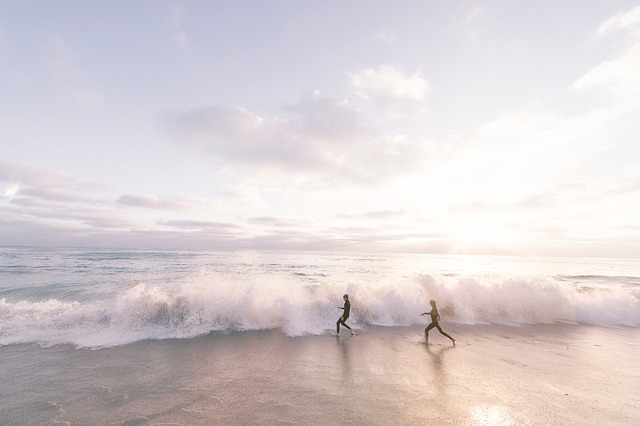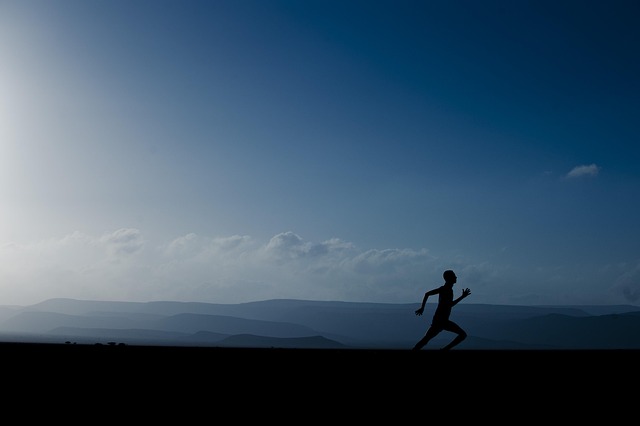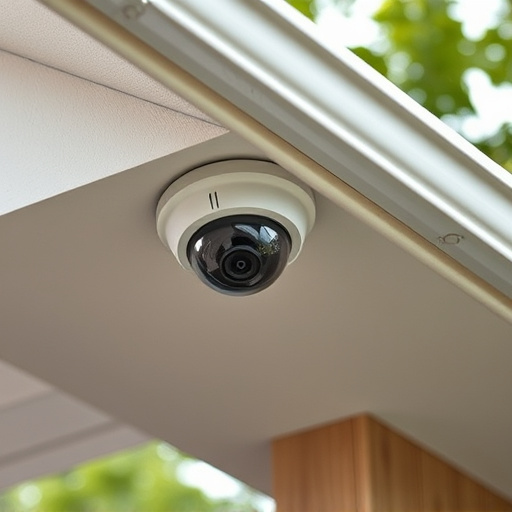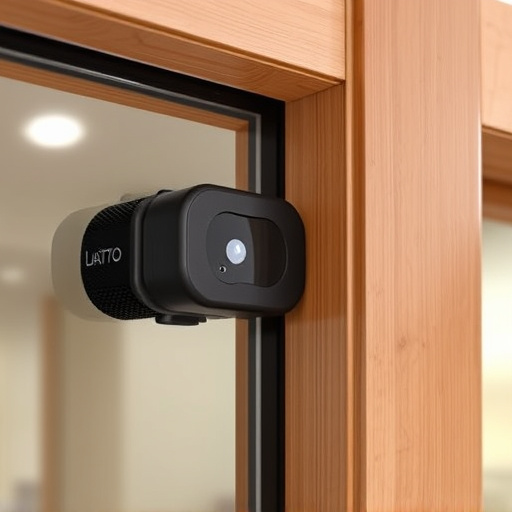Before running, understand your environment, prioritizing traffic-safe routes, reflective gear, and protective footwear. Choose shoes that fit well and offer cushioning, flexibility, and traction to prevent injuries. For night runs, invest in visible lighting and GPS tracking for safety. Adapt your gear to weather conditions, including waterproof jackets and UV protection. Keep a first aid kit with bandages, antiseptic wipes, and pain relievers to treat minor injuries. Implement a Personal Safety Plan: route plan, communicate, be prepared, and wear reflective clothing with lights for low-light visibility.
Staying safe while running is paramount for an enjoyable and injury-free experience. This guide offers comprehensive tips for runner safety and essential gear to enhance your outdoor routine. From understanding your running environment and choosing the right footwear, to essential accessories for night runs and protection against weather conditions, we’ve got you covered. Learn about building a personal safety plan and keeping a first aid kit tailored for runners. Equip yourself with these insights and ensure your runs are secure and satisfying.
- Understanding Your Running Environment
- Choosing the Right Footwear
- Essential Accessories for Night Runs
- Protection Against Weather Conditions
- First Aid Kit for Runners
- Building a Personal Safety Plan
Understanding Your Running Environment

Before lacing up your shoes, understanding your running environment is a crucial runner safety tip that cannot be overstated. Whether you’re cruising along a well-lit city street or venturing into a quiet suburban neighborhood, each route presents unique challenges and potential hazards. Pay close attention to traffic patterns, especially in areas with heavy vehicular traffic. Always use designated sidewalks or bike paths and avoid running on roads if possible. Additionally, note the presence of obstacles like potholes, uneven pavement, or low-hanging branches that could cause tripping or injury.
When it comes to essential running gear, incorporating reflective clothing and accessories is a vital runner protection advice for running in low-light conditions. Ensure your attire has reflective strips or use a reflective belt or bracelet to make yourself more visible to motorists and fellow runners. Don’t overlook the importance of comfortable yet protective footwear. Well-fitted running shoes with adequate cushioning and traction will not only enhance your performance but also provide much-needed protection from injuries and uneven terrain.
Choosing the Right Footwear

Choosing the right footwear is a crucial aspect of runner safety tips and essential running gear. Your feet need supportive and comfortable shoes that cater to your foot shape, gait, and running style. Opt for brands that offer proper cushioning, flexibility, and traction to prevent injuries. Investing in good-quality running shoes can provide necessary protection advice for runners, ensuring each stride is safe and efficient.
When selecting safe running gear, consider factors like breathability, stability, and durability. Running in weather-appropriate footwear is essential for personal safety, especially when navigating varied terrain or outdoor conditions. Always test run your chosen shoes to ensure they feel comfortable and secure during extended periods of use.
Essential Accessories for Night Runs

When planning night runs, ensuring proper lighting and visibility is paramount among runner safety tips. Invest in a high-quality headlamp or reflective clothing to increase your personal safety for runners. These accessories not only make you more visible to drivers but also free up your hands, allowing you to focus on your pace and navigation.
In terms of essential running gear, consider incorporating a reliable GPS watch or phone case with a built-in light. These devices offer real-time tracking capabilities, which can be invaluable in unfamiliar areas. Additionally, remember the importance of comfortable yet protective footwear. Well-fitted running shoes with reflective elements can significantly enhance your runner protection advice, ensuring you stay safe during low-light conditions.
Protection Against Weather Conditions

Running outdoors comes with its fair share of unpredictable weather conditions that can pose risks to your safety and performance. That’s why incorporating appropriate gear into your routine is a crucial runner safety tip. In terms of protection against the elements, consider investing in high-quality running apparel designed for various climates. Waterproof jackets and breathable shoes are essential for keeping you dry and comfortable during wet weather runs, while windproof layers can shield you from cold gusts.
For hot days, lightweight and reflective clothing is recommended to stay cool and visible to drivers. In addition to weather protection, some runners also opt for gear that provides UV protection, especially in sunny regions. Remember, suitable running gear not only enhances your comfort but significantly contributes to your personal safety for runners, ensuring you can enjoy your runs without worrying about the weather’s impact.
First Aid Kit for Runners

A well-equipped first aid kit is an indispensable part of any runner’s essential gear, serving as a crucial component of runner safety tips. Beyond treating minor injuries like scrapes and bruises, it provides vital protection in case of more severe emergencies. Include items such as bandages, antiseptic wipes, pain relievers, tweezers for removing splinters or thorns, and a whistle to signal for help in remote areas. Remember to regularly update your kit to ensure its contents remain current and effective.
When it comes to personal safety for runners, being prepared is key. Consider the environment you’ll be running in—rural roads, busy city streets, or secluded trails—and tailor your kit accordingly. For instance, if you frequently run in remote locations, pack a compact emergency blanket and a lightweight thermal foil pouch to retain body heat in case of an unexpected delay. Additionally, always inform someone about your running route and expected return time for added peace of mind during your runs.
Building a Personal Safety Plan

Creating a Personal Safety Plan is a crucial aspect of runner safety tips and essential running gear. Before heading out for a run, take time to consider your route, especially if it’s unfamiliar. Check local crime statistics and identify areas that may pose potential risks. Inform someone you trust about your running schedule and expected return time—this simple act can serve as a form of running protection advice. Carry a charged mobile phone to ensure you have access to emergency services if needed. Additionally, investing in safe running gear like reflective clothing and a bright running light can significantly enhance your visibility during low-light conditions.
Your personal safety for runners strategy should also include basic first aid knowledge tailored for athletes. Learn how to treat minor injuries or sprains promptly. Consider carrying a small kit with essential items like bandages, antiseptic wipes, and pain relief medication. These measures, combined with wearing appropriate safe running gear, can significantly contribute to runner protection tips and ensure your runs are enjoyable and secure.






